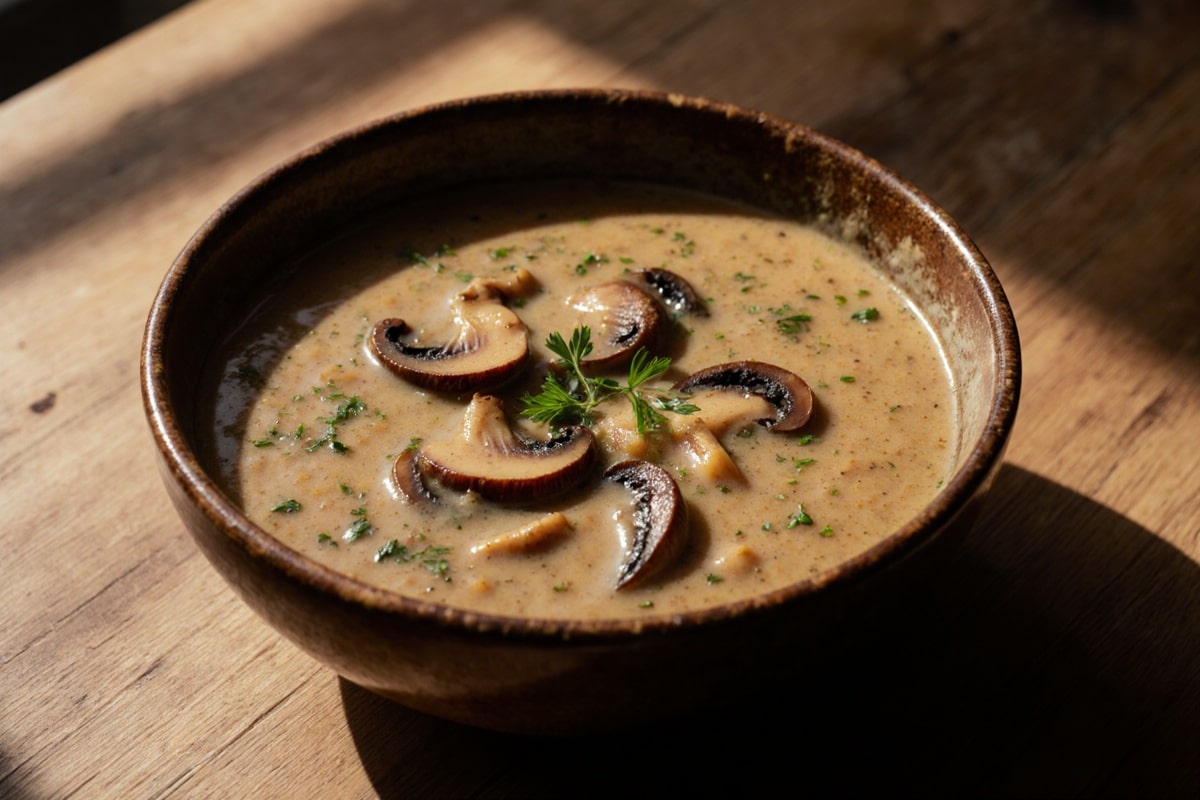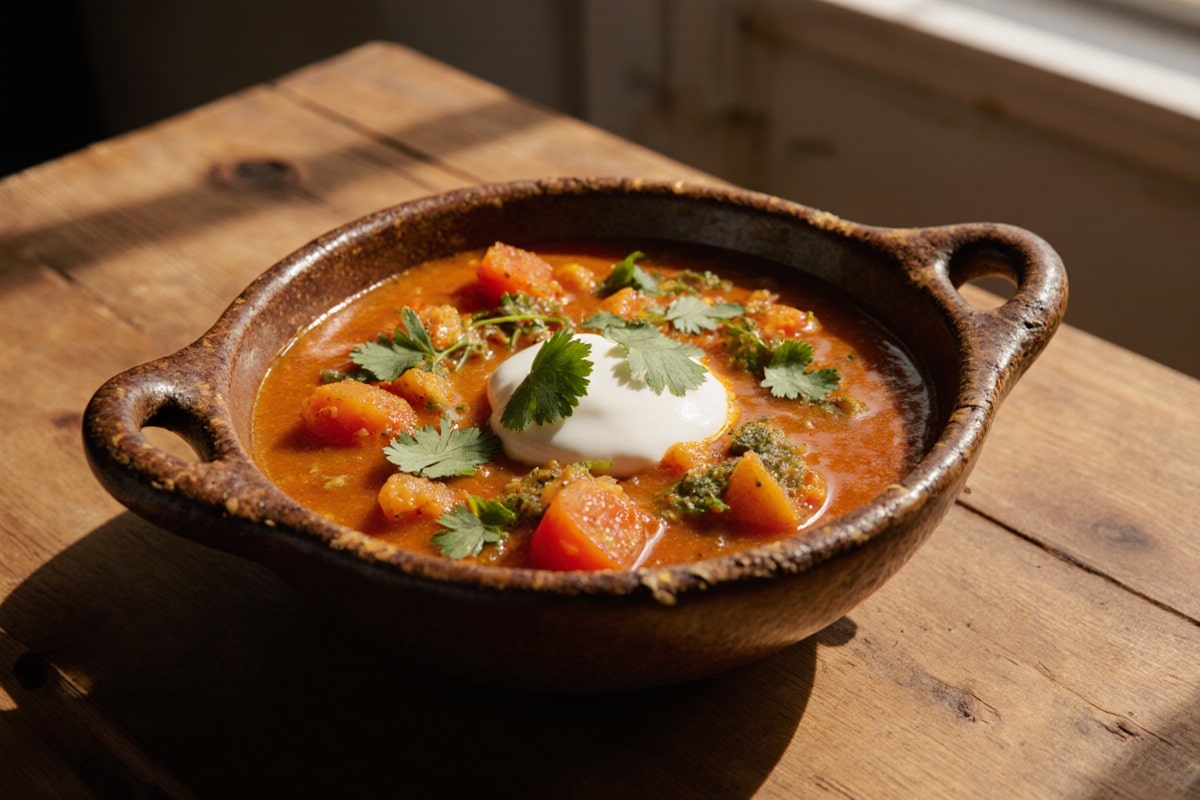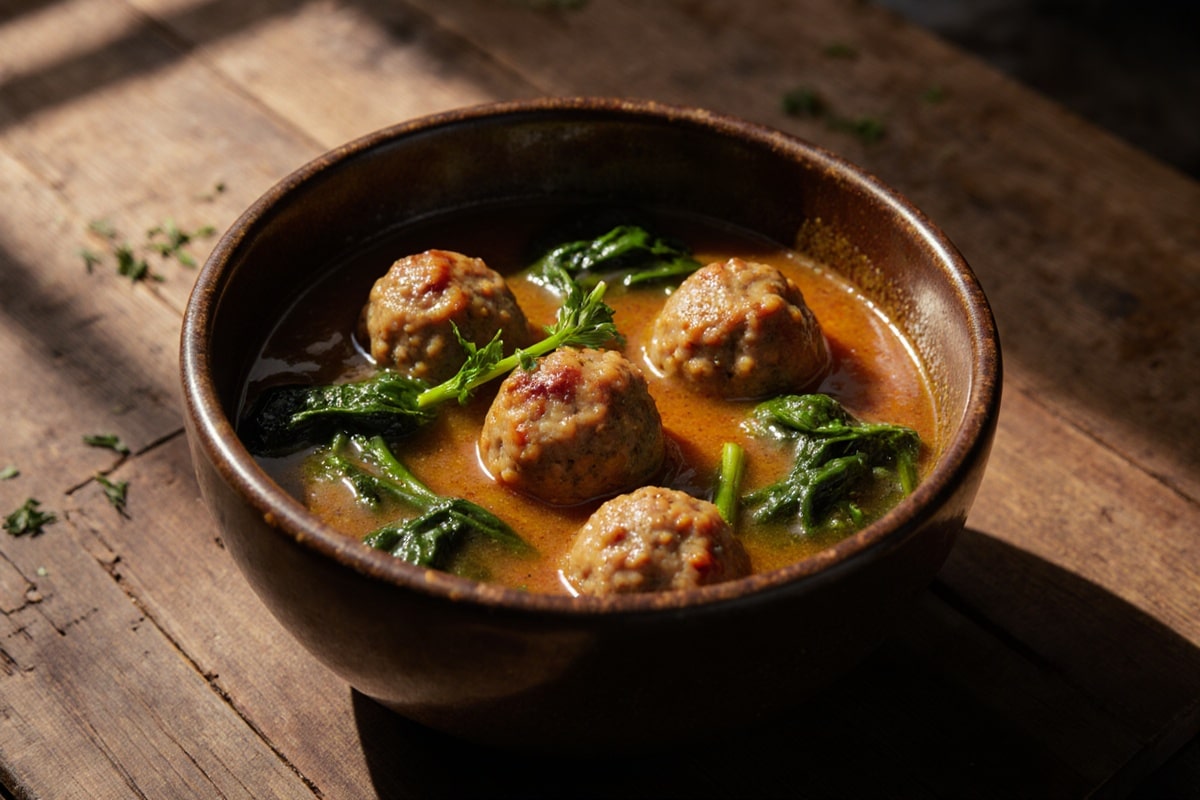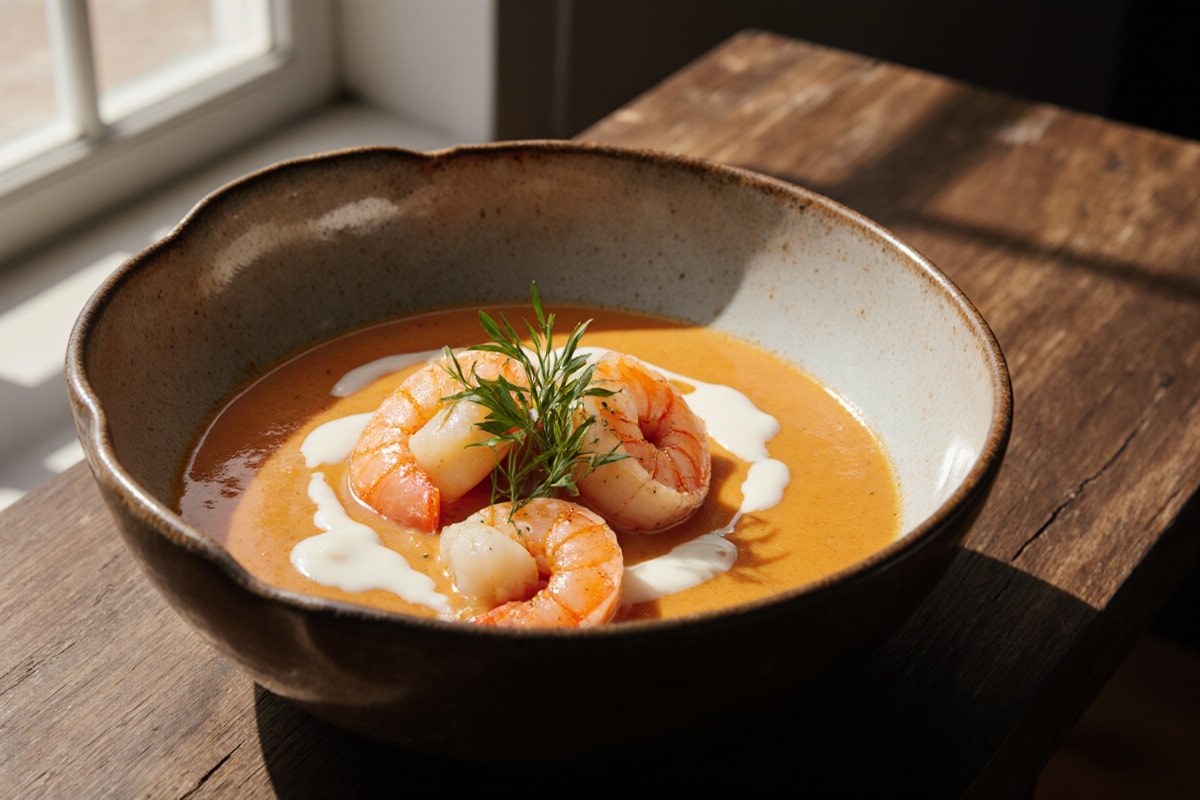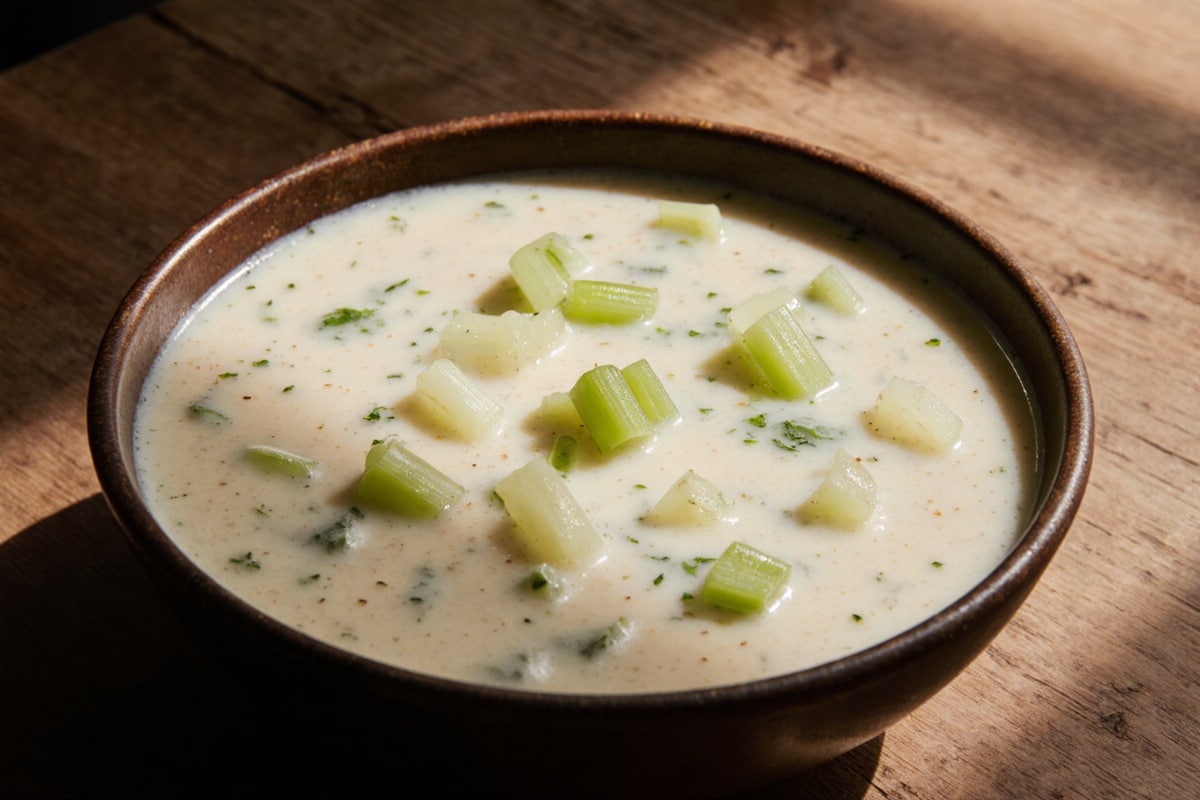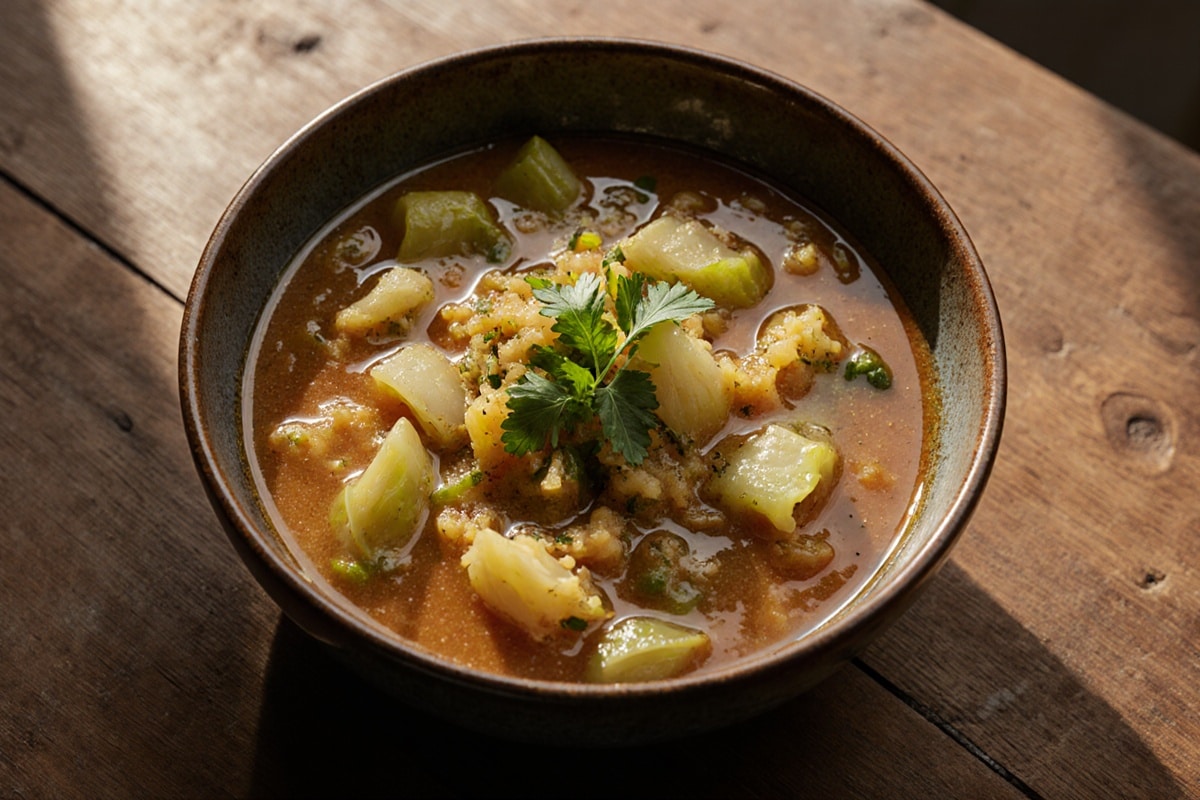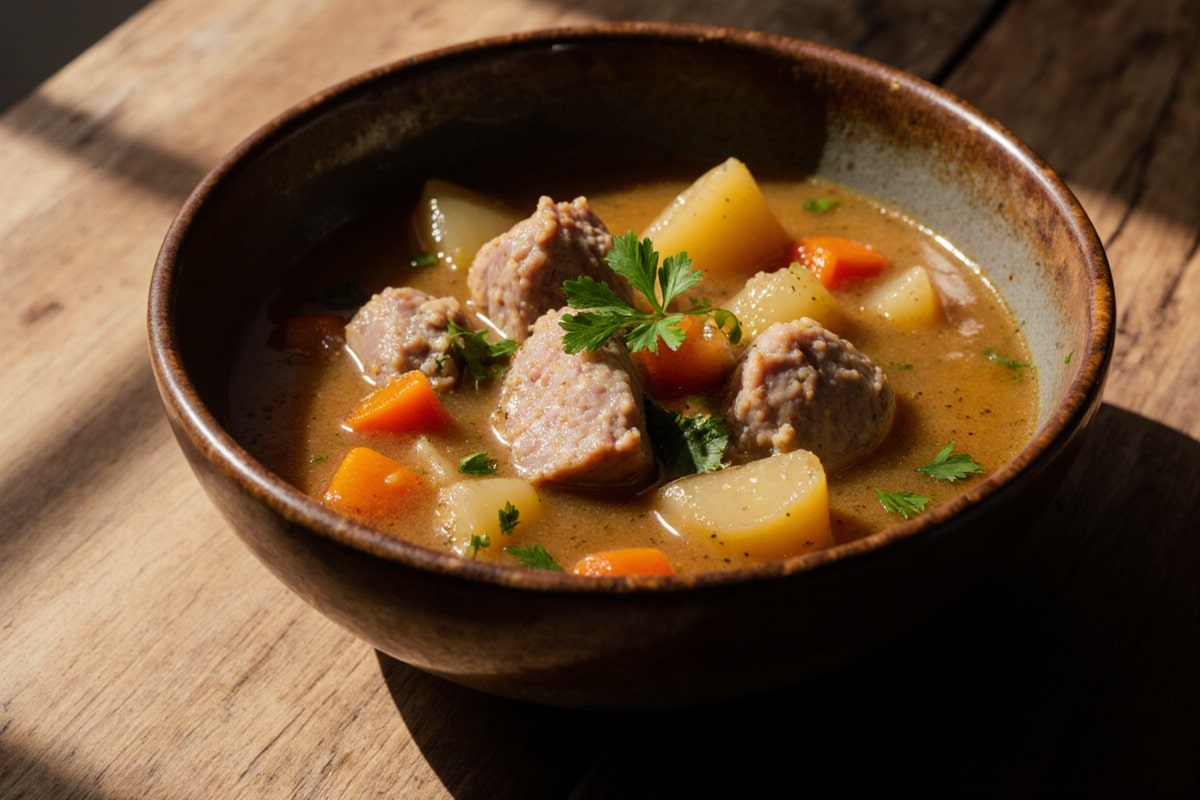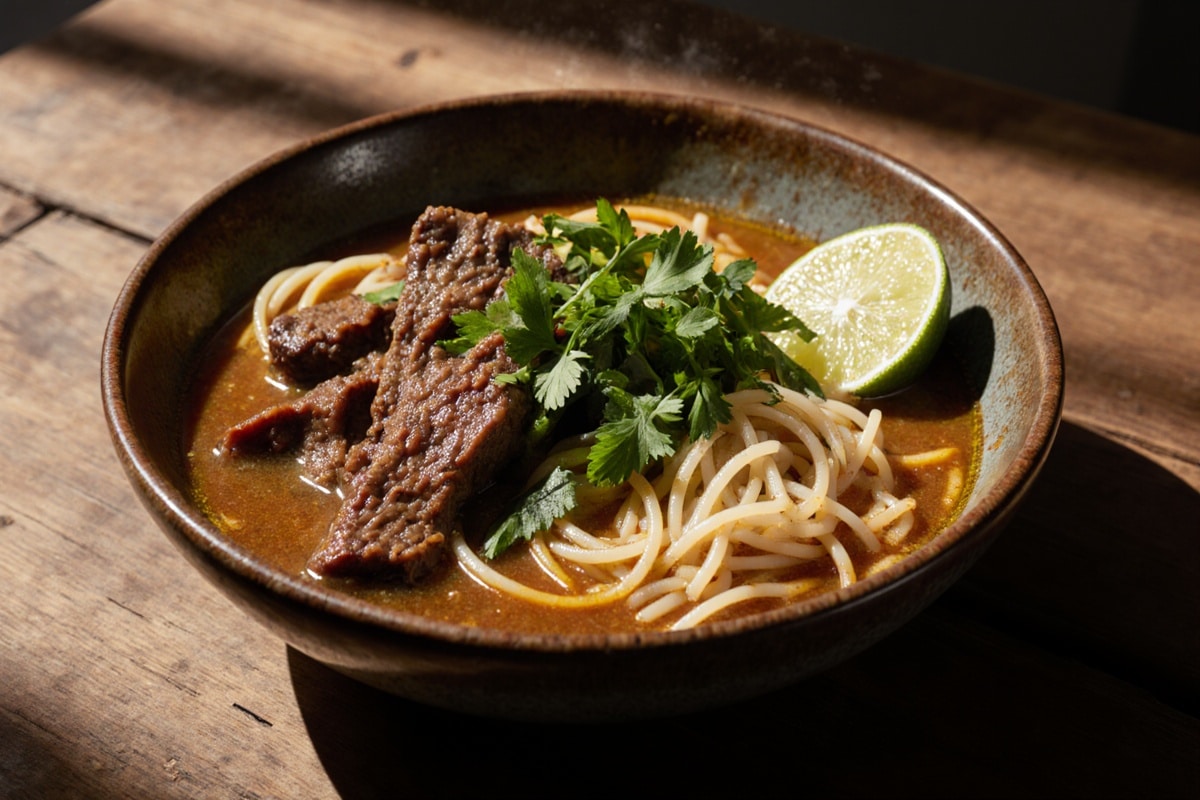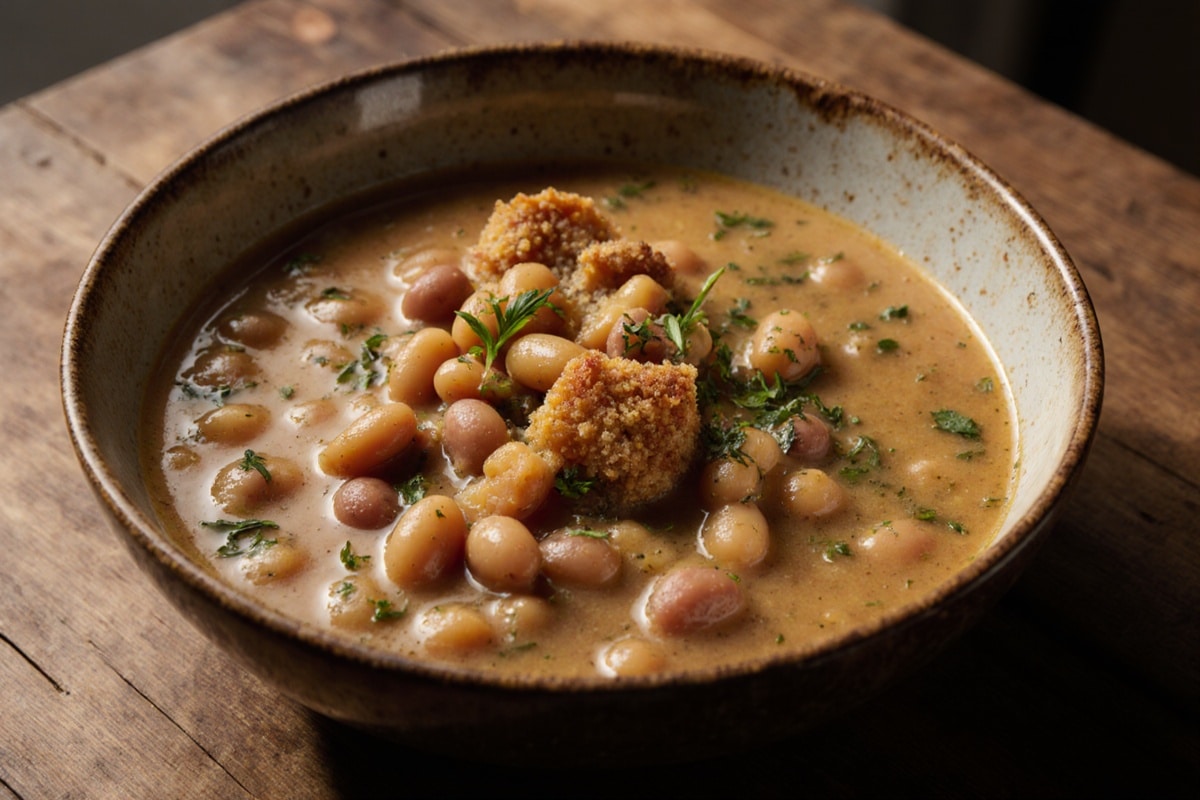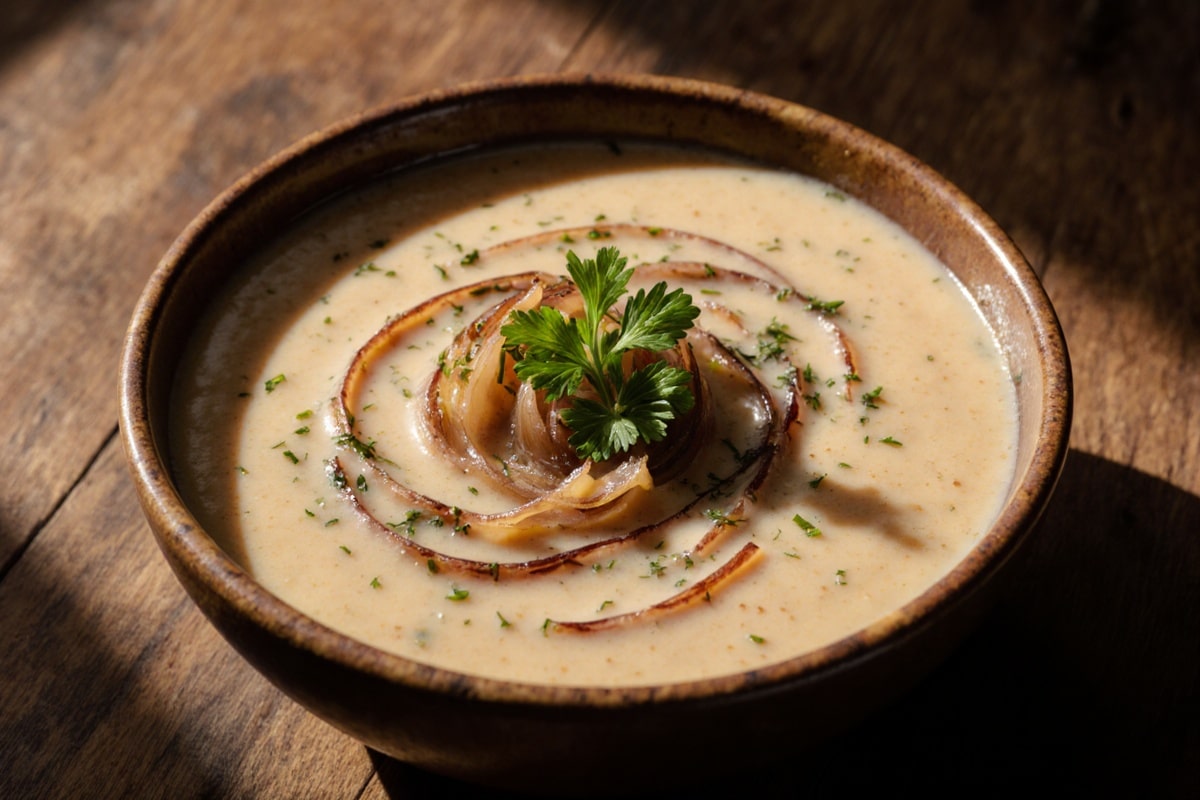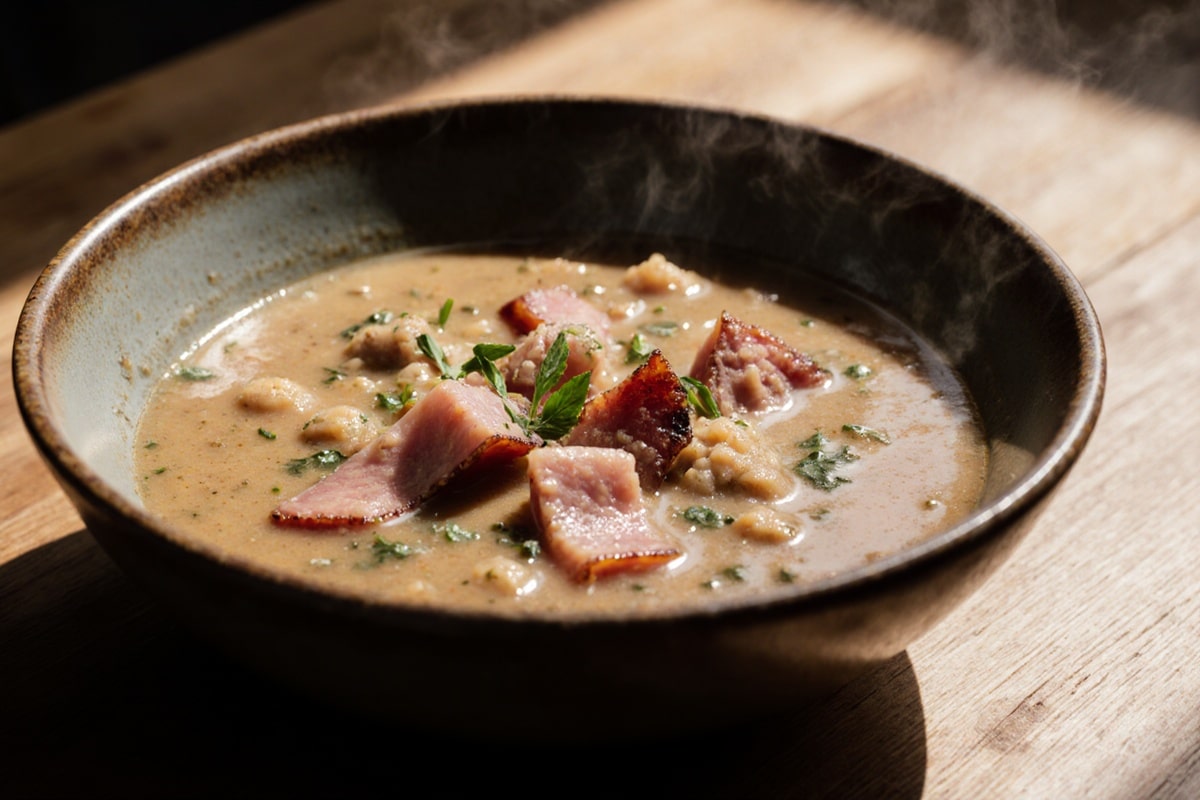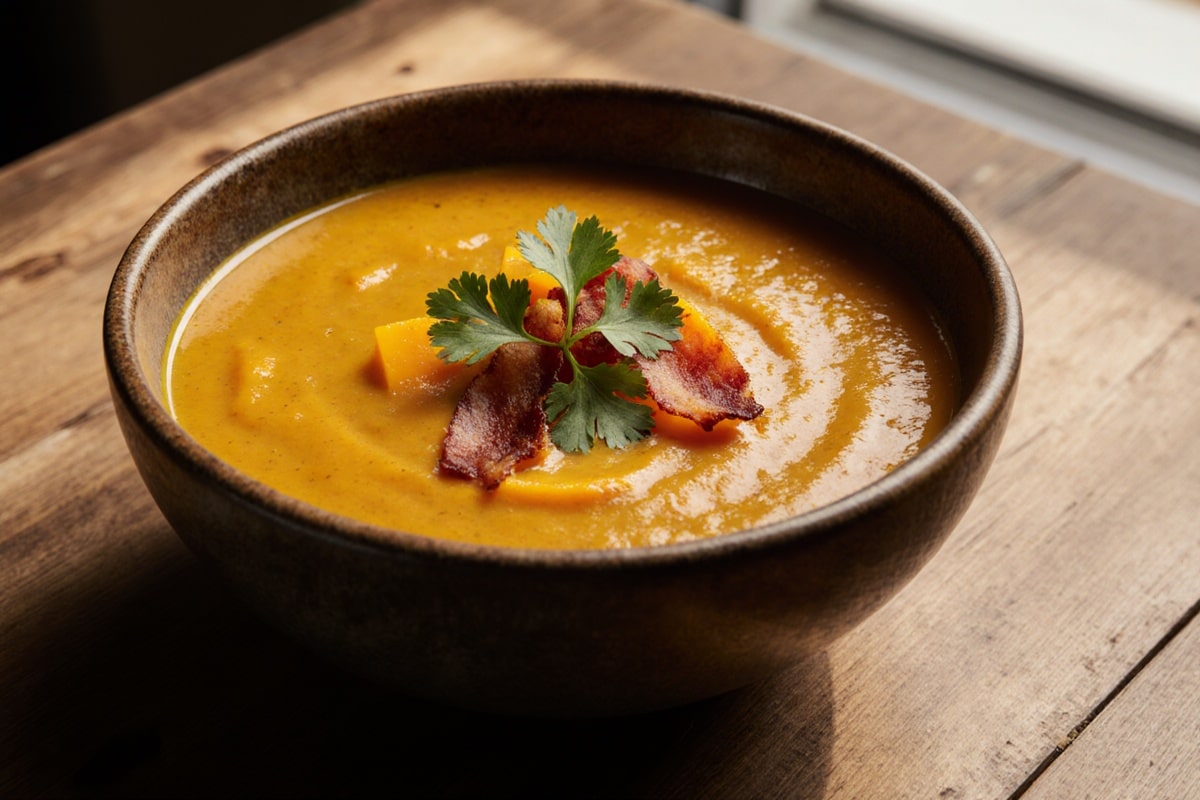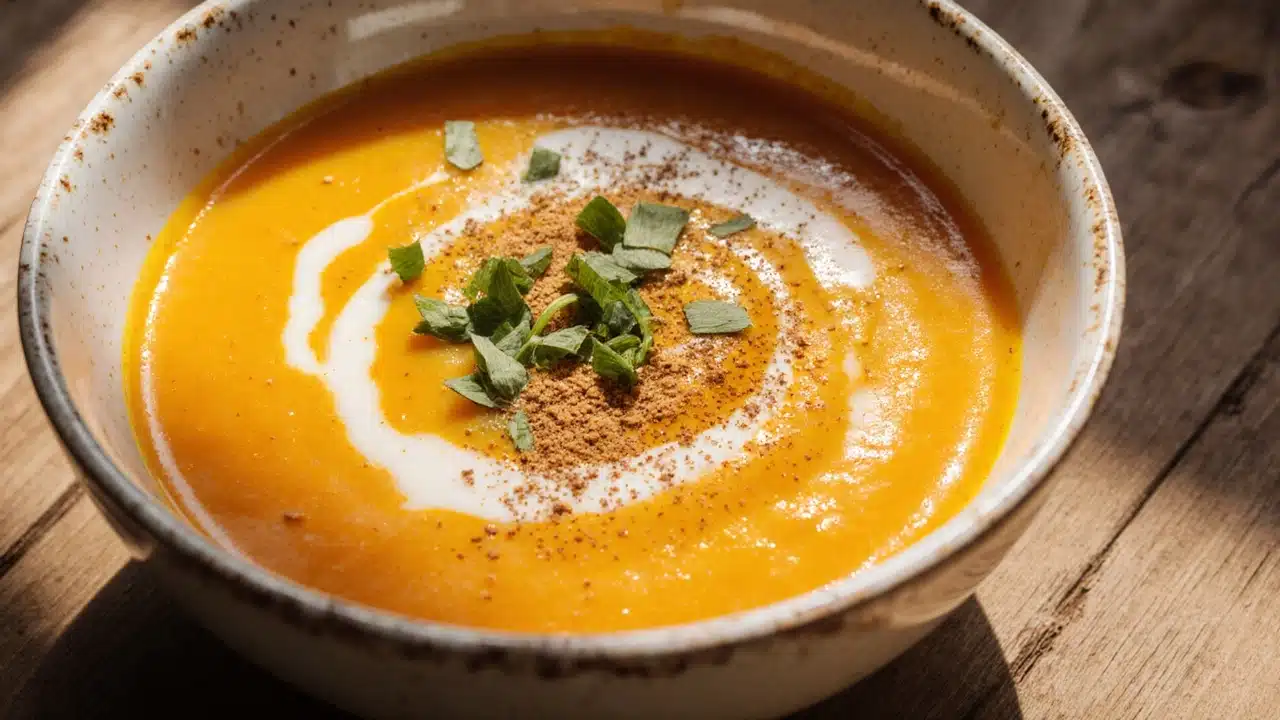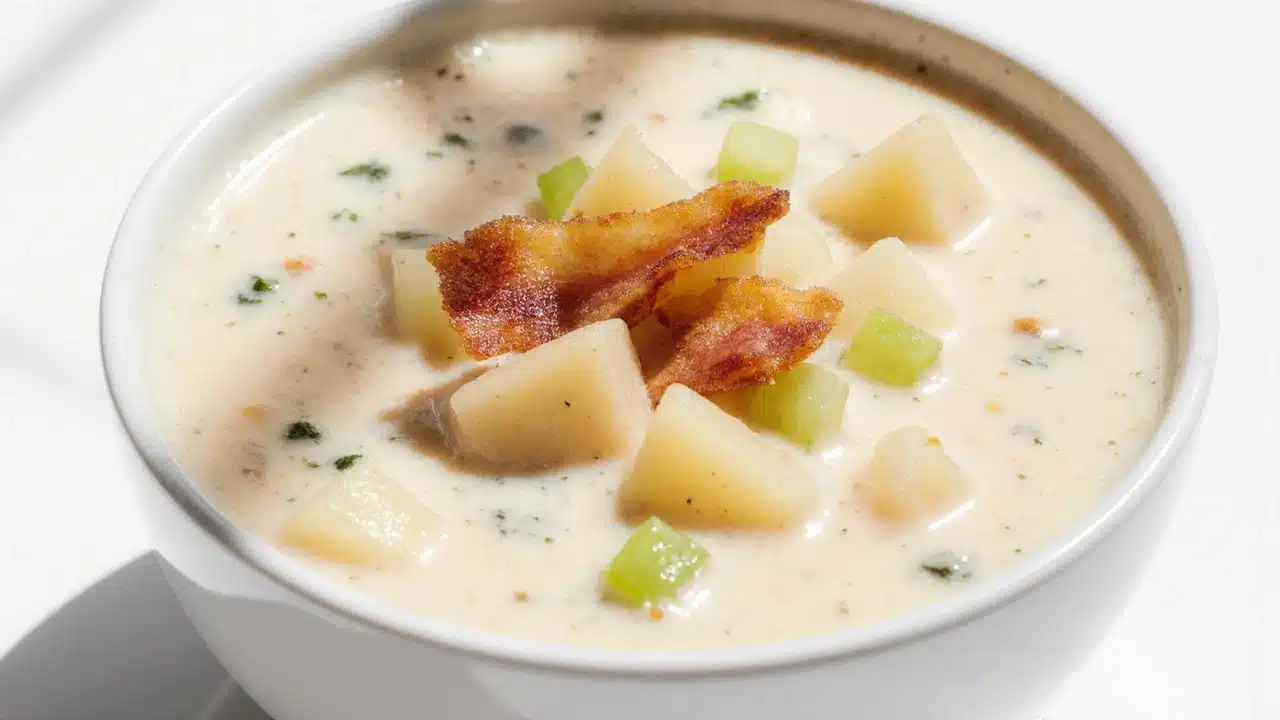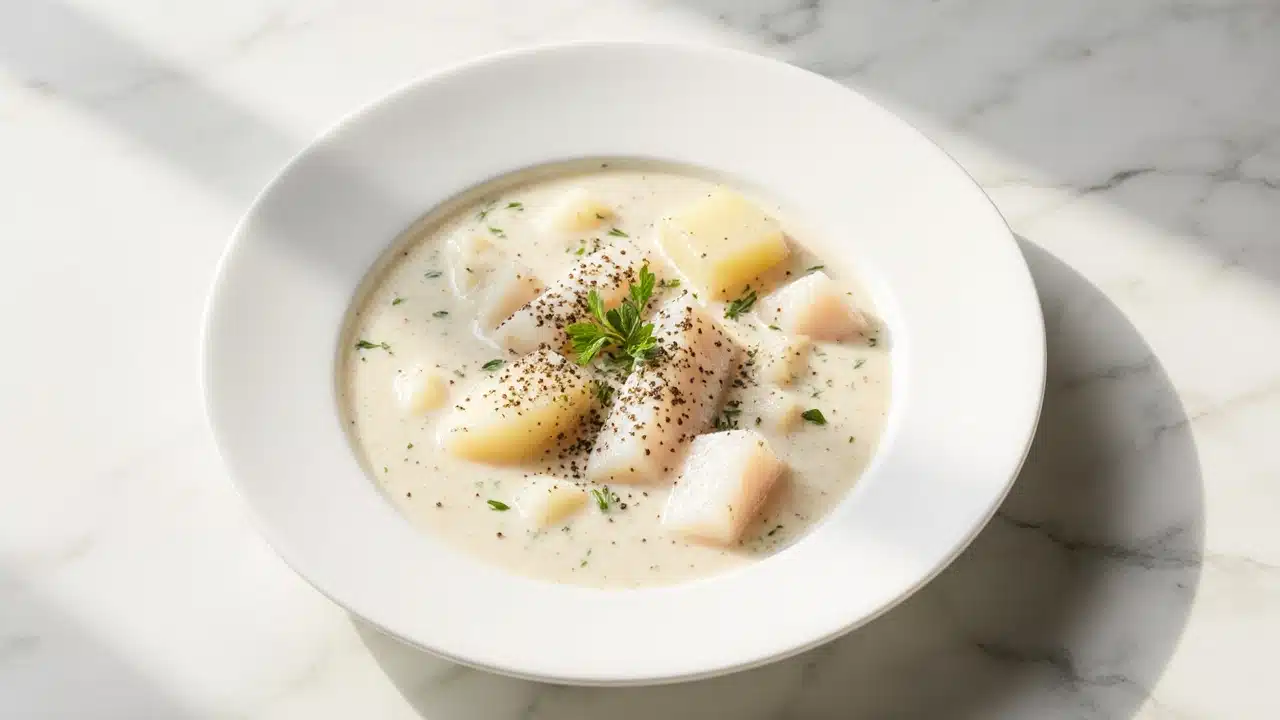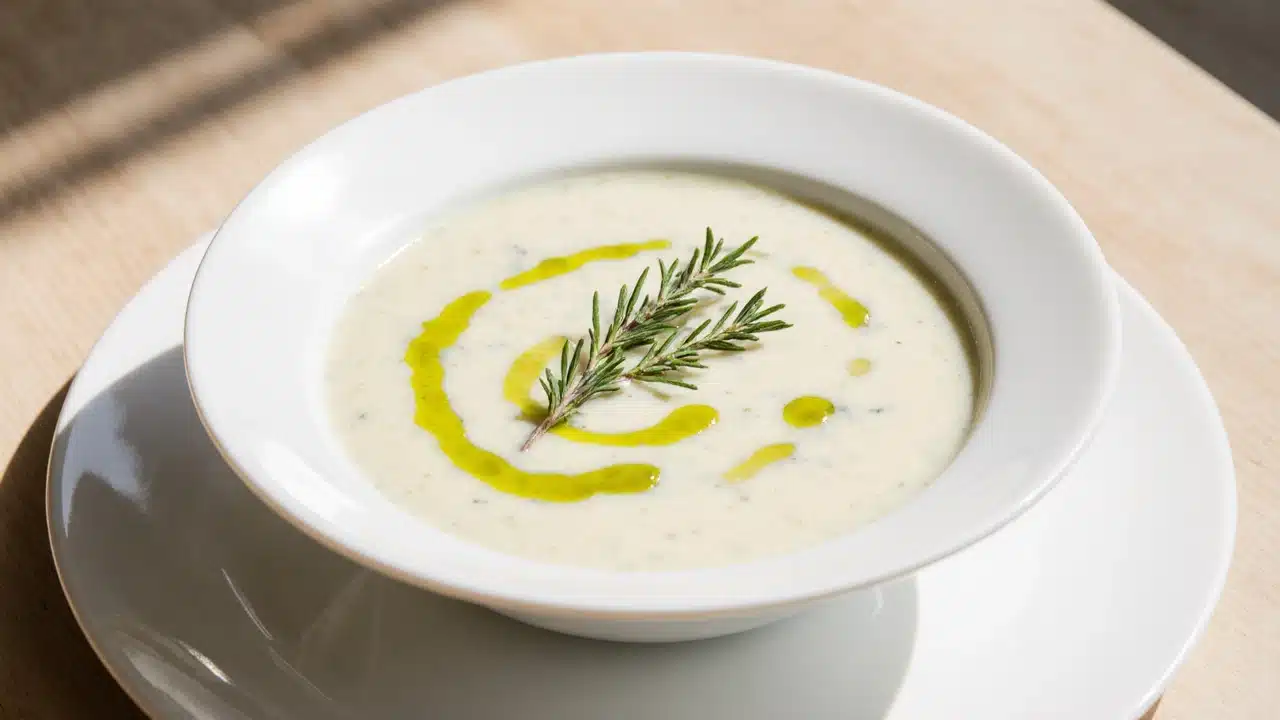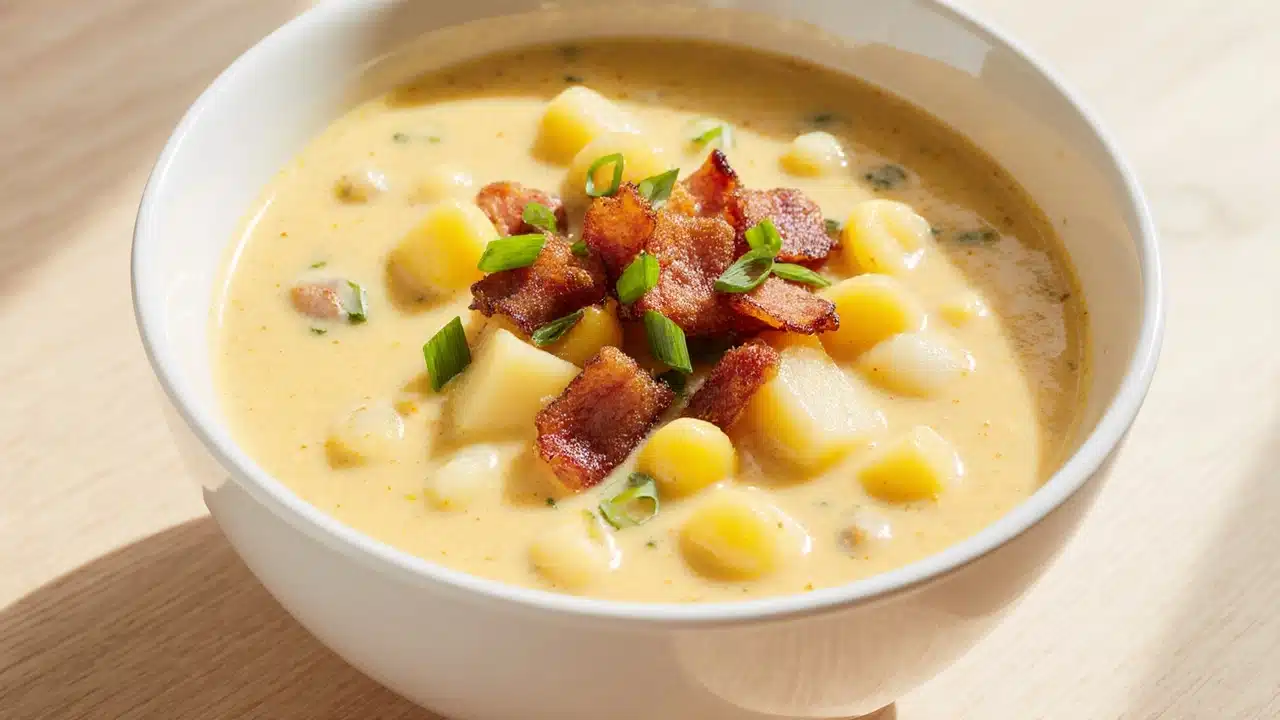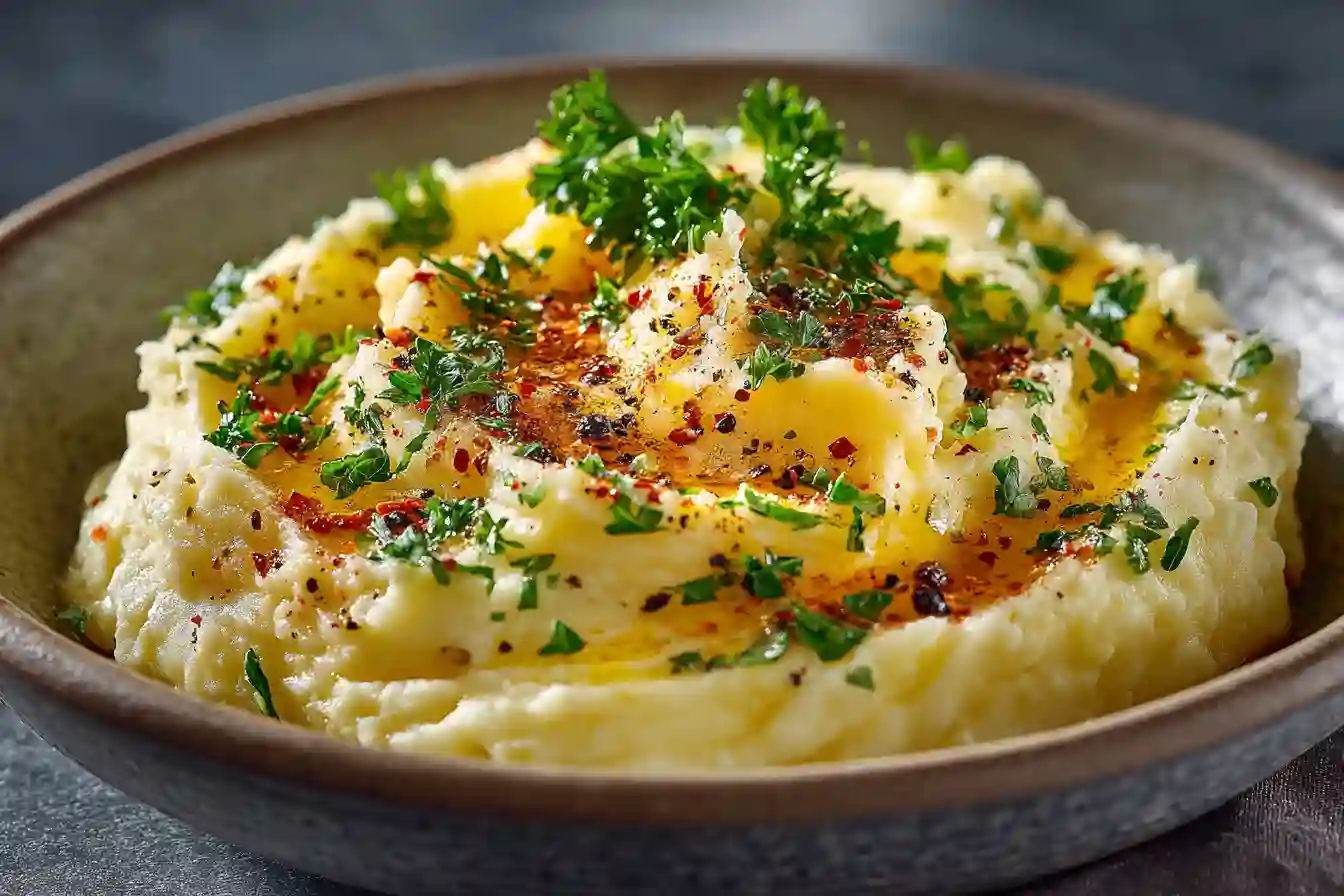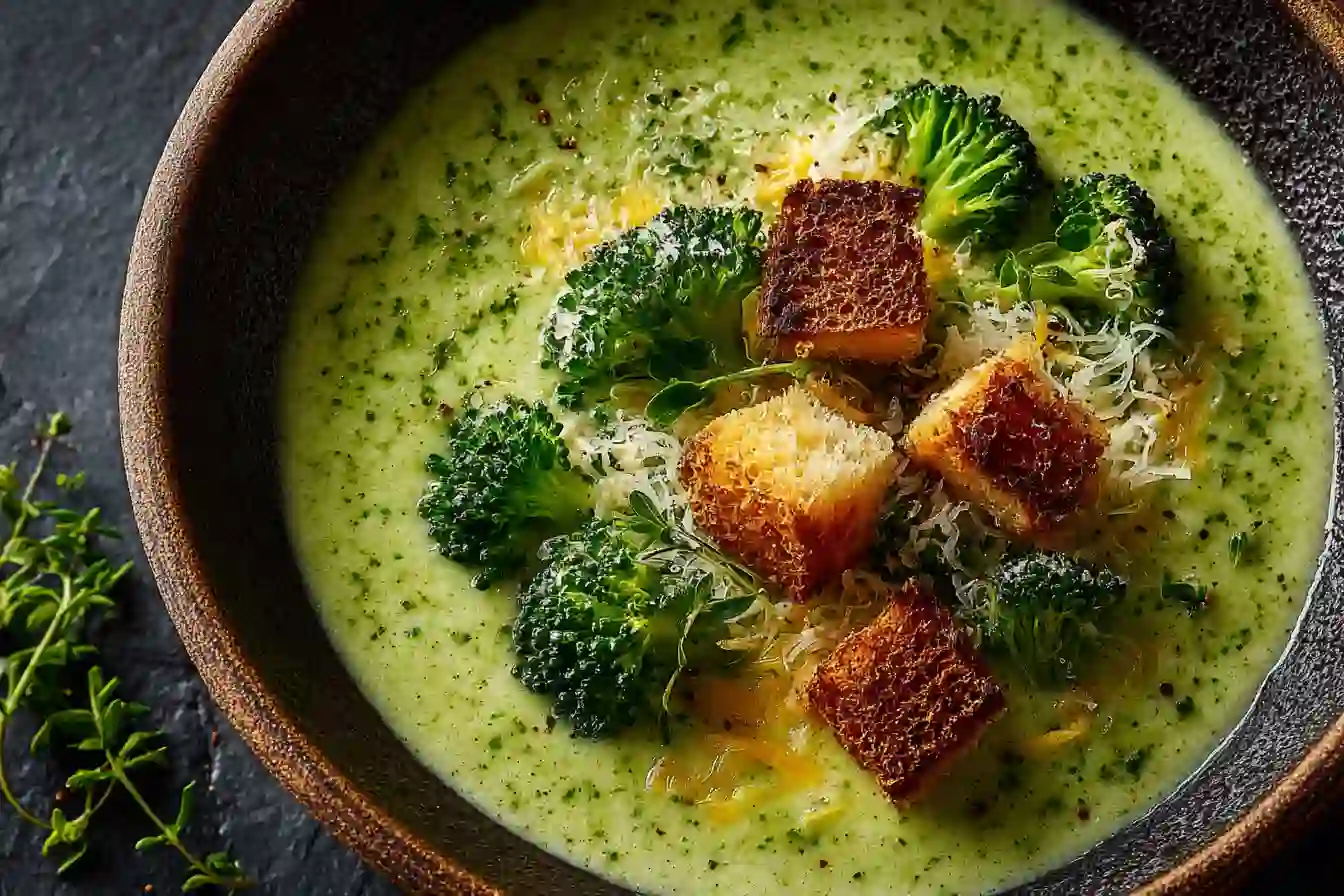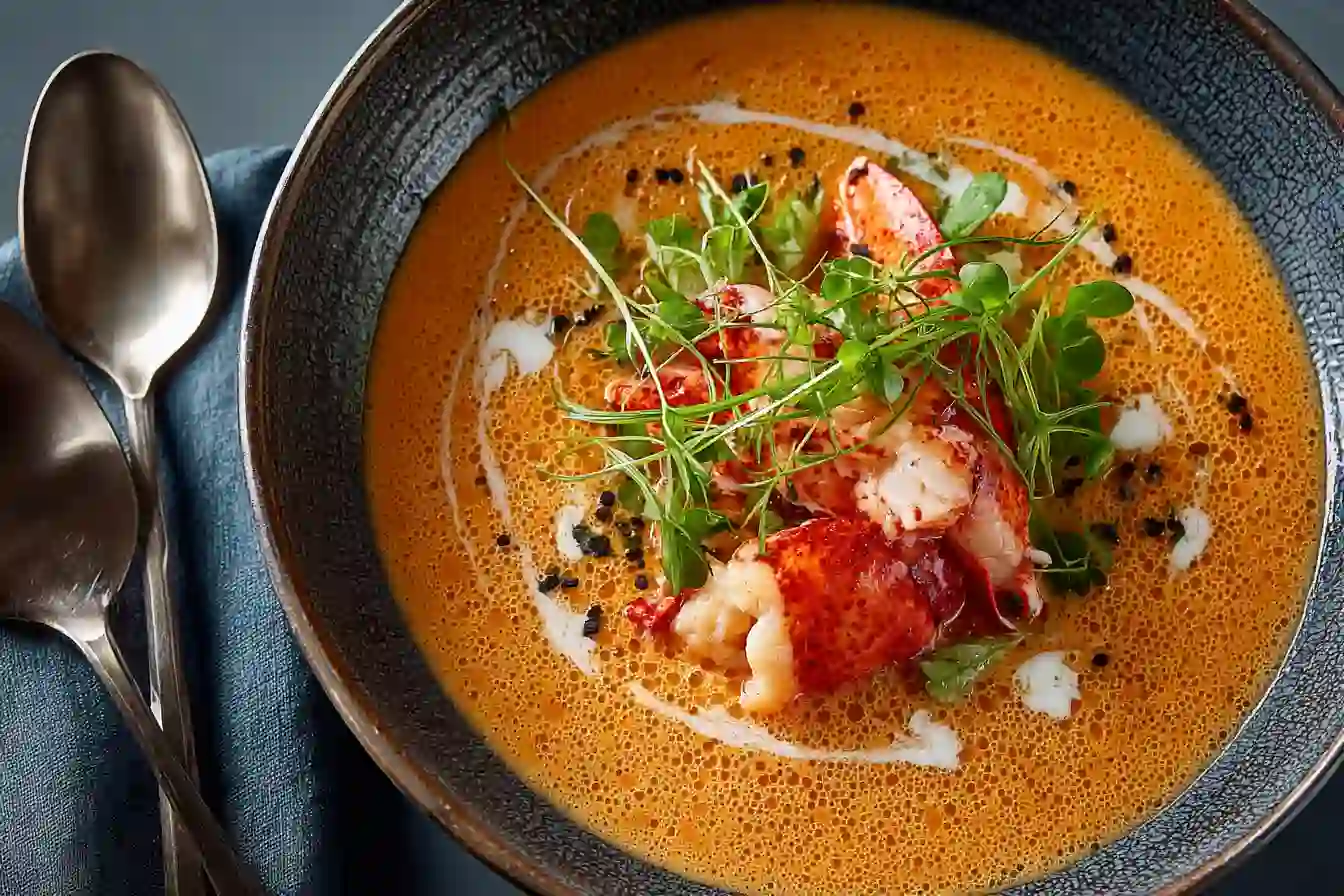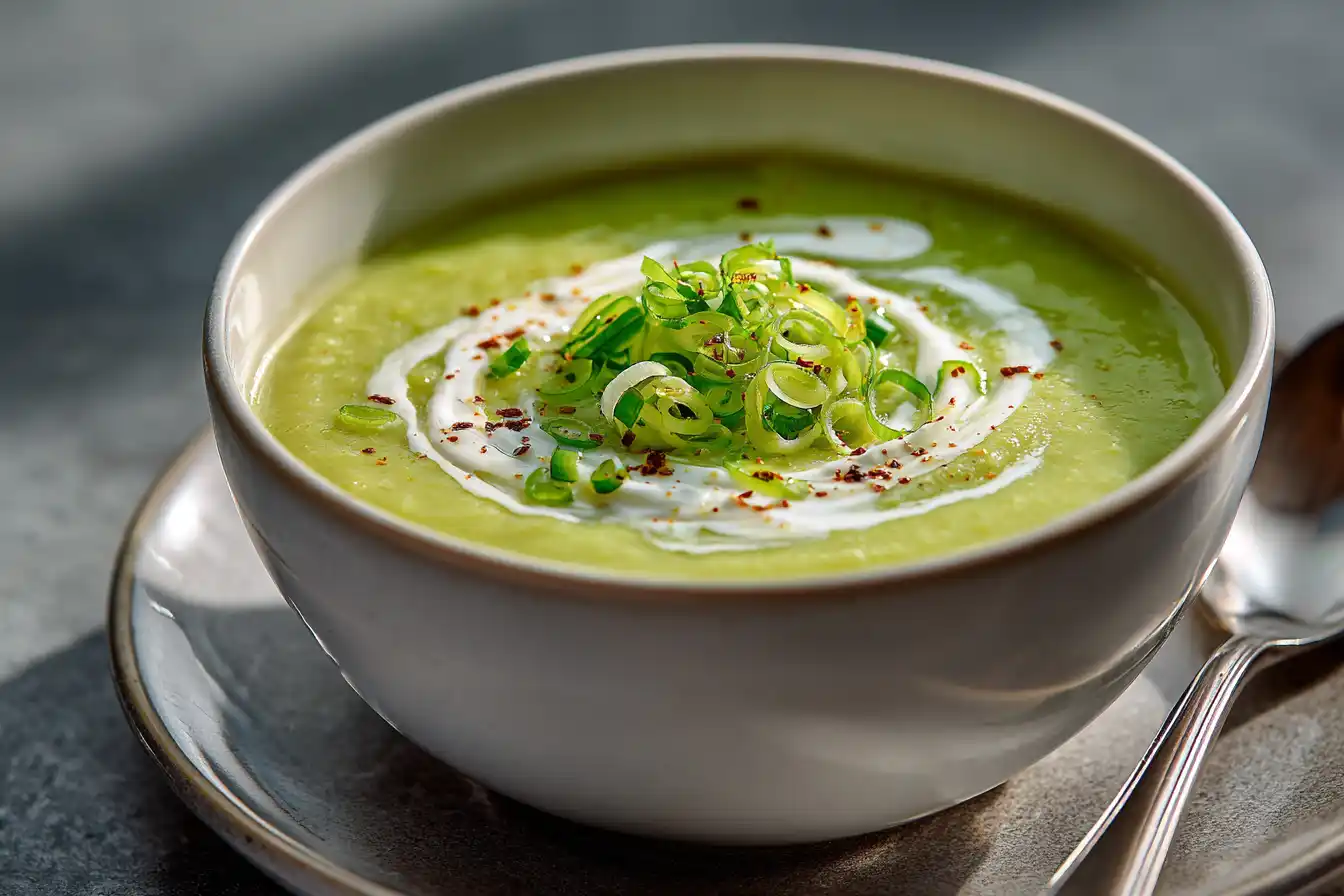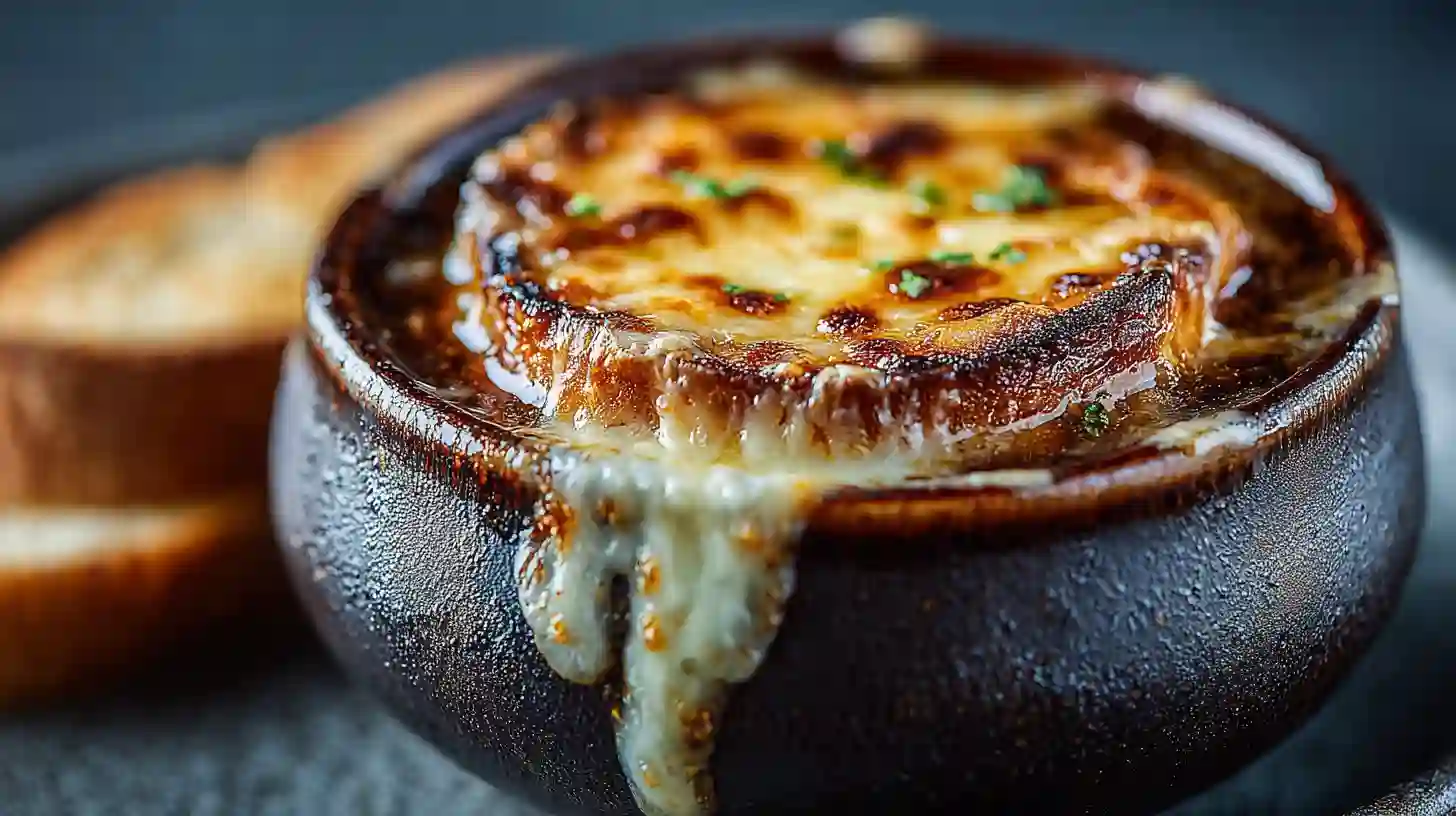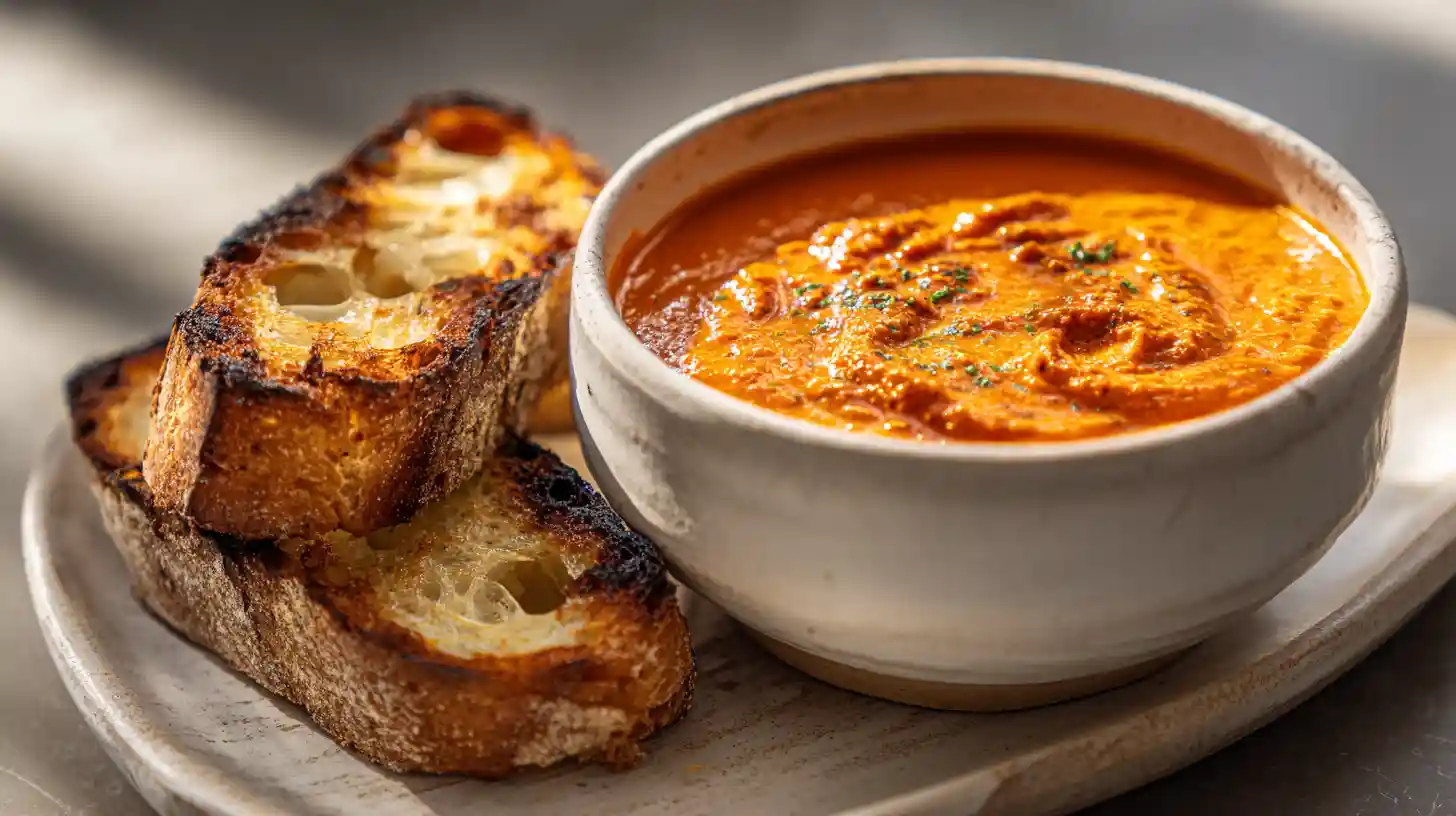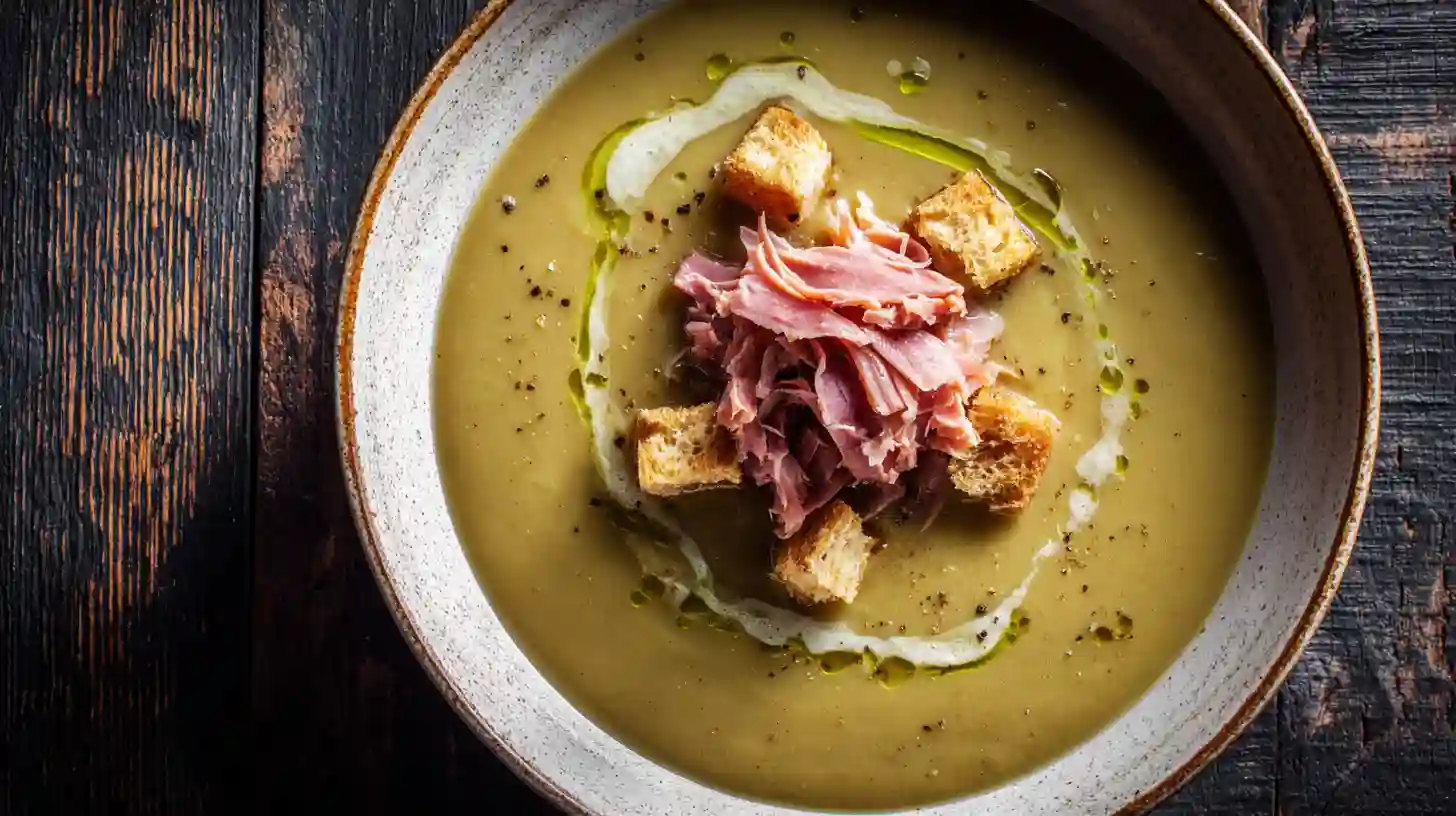For years, my soups were a culinary apology. They were watery, one-note bowls of boiled vegetables that I’d try to save with a desperate last-minute flurry of salt. I believed the myth that soup was just a matter of throwing leftovers in a pot. It was only after deconstructing hours of Gordon Ramsay’s shows that I understood the truth: great soup isn’t a dump-and-boil afterthought. It’s a construction. The best Gordon Ramsay Soups and Chowders Recipes are built on layers of flavor, precise technique, and the discipline to treat comfort food with respect.
This is the blueprint to that method. It’s not about a single recipe; it’s about the foundational philosophy that underpins all of his greatest soups, from a simple tomato basil to a complex smoked fish chowder. Once you learn to build flavor in layers, you’ll never serve a bland bowl of soup again.
The Method: Why The Authentic Gordon Ramsay Soups and Chowders Recipes Work
A truly great soup has depth. It’s a journey of flavor from the first spoonful to the last. Ramsay achieves this not with secret ingredients, but with a methodical, four-stage process that builds complexity at every step.
1. The Aromatic Base: “The Holy Trinity”
Almost every great soup begins here. Whether it’s the French mirepoix (onion, carrot, celery) or a simpler base of shallots and garlic, this first step is non-negotiable. The key is to sweat the aromatics, not brown them. You add them to a heavy-bottomed pot with a little fat (oil or butter) over a gentle heat. This process coaxes out their natural sweetness and deepens their flavor without creating any bitterness. A rushed, browned base will taint the entire pot. A patiently sweated base is the clean, savory foundation upon which you build everything else.
2. “Waking Up” the Spices and Purées
This is a small step that makes a monumental difference. Never dump raw spices or tomato purée directly into your simmering liquid. They need to be “woken up.” After your aromatics have softened, you create a space in the center of the pot. Add your ground spices (like cumin or coriander) and toast them for 30-60 seconds until they become intensely fragrant. This releases their volatile oils and deepens their flavor. Do the same with tomato purée; letting it toast and caramelize for a minute removes its raw, tinny taste and adds a rich umami depth. This is a core principle in many Gordon Ramsay Soups and Chowders Recipes.
3. The Gentle Simmer: Respecting the Heat
Once your base is built and your liquids are added, the biggest mistake is to let the pot reach a rolling boil. A violent boil makes meat and vegetables tough, can cause dairy to split, and clouds your broth. A perfect soup is held at a gentle, murmuring simmer. This allows the flavors to meld together slowly and gracefully. It keeps the ingredients tender and the broth clear and clean-tasting. Patience during the simmer is what separates a refined soup from a chaotic, boiled mess.
4. The Finish: The Final Layer of Brilliance
A soup is not finished until it’s finished. The final 60 seconds are crucial. This is where you adjust for seasoning and add the final touches that make the soup “pop.”
- Acid: A squeeze of lemon or lime juice can brighten up the entire pot, cutting through richness.
- Fat: A swirl of high-quality extra virgin olive oil or a knob of cold butter stirred in off the heat (a monter au beurre) adds richness and a glossy sheen.
- Herbs: Fresh, delicate herbs like parsley, basil, or cilantro are almost always added at the very end to preserve their fresh, vibrant flavor.
This final flourish is the signature of all great Gordon Ramsay Soups and Chowders Recipes.
Mistake Watchouts: I Failed So You Don’t Have To
I’ve served soups that tasted like hot, flavored water. I’ve made chowders that were thin and disappointing. Learn from my errors.
- Mistake #1: A Watery, Lifeless Broth. I used to just cover my ingredients with water or cheap stock and simmer. The result was thin and bland. The flavor was floating in the soup, not part of it. The Fix: Build your base properly. Sautéing the aromatics and toasting the spices is what creates depth. Use a quality stock whenever possible, and don’t be afraid to let the soup reduce slightly to concentrate its flavor.
- Mistake #2: The Gritty Spice Taste. I would remember cumin halfway through the simmer and just dump it in raw. The result was a gritty texture and a raw, dusty taste that ruined the whole batch. The Fix: Always toast your spices in the pot before adding any liquid. This 60-second step is non-negotiable. It transforms the spice from a raw ingredient into a fragrant, integrated layer of flavor.
- Mistake #3: Forgetting the Final Seasoning. I’d taste the soup before serving, think “it’s okay,” and ladle it out. It always fell flat. The Fix: A soup is never truly done until the final seasoning adjustment. It almost always needs more salt than you think, and a hit of acid (lemon juice, vinegar) is the secret weapon that makes all the other flavors come alive. Taste, season, and taste again right before it goes in the bowl. This is a must for all Gordon Ramsay Soups and Chowders Recipes.
Essential Soups & Chowders to Master
Understanding the core philosophy allows you to tackle Ramsay’s most famous creations. These recipes are the pillars of the soup and chowder category.
- The Perfect Tomato and Basil Soup: The ultimate test of building flavor from simple ingredients. The secret lies in using ripe tomatoes and caramelizing the base to perfection.
- Thai Pumpkin or Butternut Squash Soup: A masterclass in balancing sweet, spicy, and savory notes. This recipe relies on toasting the spices and finishing with coconut cream and fresh lime.
- Smoked Fish Chowder: A hearty, rustic dish that teaches the importance of a gentle simmer to keep the delicate smoked haddock or cod from breaking apart.
- Classic Leek and Potato Soup: The benchmark for creamy, blended soups. The creaminess comes from the starch of the potatoes, not just from heavy cream.
Plating and Execution
Serving soup is about more than just a ladle and a bowl. Presentation elevates the experience.
- Garnish with Texture and Color: This is crucial. A smooth soup needs something crunchy—think garlic croutons, toasted nuts or seeds, or crispy fried shallots. A rustic chowder benefits from a sprinkle of vibrant fresh herbs.
- The Swirl: For creamy soups, pour the soup into the bowl and then finish with a swirl of high-quality cream, coconut milk, or herb-infused oil on top.
- A Clean Bowl is a Sign of Respect: Always wipe the rim of the bowl with a clean paper towel before serving. It’s a small detail that shows care and professionalism.
Recipe FAQs
How do I make a soup creamy without adding heavy cream?
There are several Ramsay-approved techniques. You can add a starchy potato to the soup base; when blended, it creates a natural, creamy thickness. Alternatively, you can remove a third of the soup, blend it until smooth, and then stir it back into the main pot. A final method is to stir in a spoonful of full-fat Greek yogurt or crème fraîche at the end.
My soup is bland. How do I fix it?
Before you add more of any single ingredient, check three things: Salt, Acid, and Umami. First, add more salt and taste again. If it’s still flat, add a squeeze of lemon juice or a dash of vinegar to brighten it. If it still lacks depth, a splash of Worcestershire sauce or soy sauce can add a savory umami backbone that might be missing. This is a key troubleshooting step for Gordon Ramsay Soups and Chowders Recipes.
Can I freeze these soups?
Most broth-based and vegetable-purée soups freeze beautifully. However, be cautious with soups that contain dairy (heavy cream, milk) or potatoes. Dairy can sometimes split or become grainy upon reheating, and potatoes can become mealy. For best results, freeze the soup base before adding the final dairy or potato elements, and add them when you reheat it.
The Result / Conclusion
Mastering the Gordon Ramsay Soups and Chowders Recipes is about learning to see soup not as a single ingredient, but as a sum of its well-executed parts. It’s a delicious exercise in discipline. It’s about the sweet aroma of patiently sweated onions, the fragrant bloom of toasted spices, and the satisfying depth of a perfectly balanced broth.
When you serve a bowl of soup that you have built from the ground up—a soup that is rich, deep, and complex—you’ll understand. You haven’t just thrown things in a pot. You have crafted a meal. You have layered flavor. And you have learned the difference between simply cooking, and cooking with intention.


